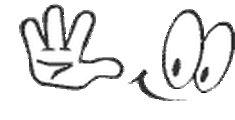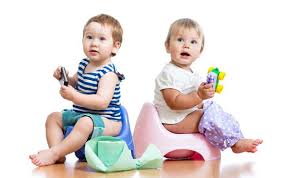Hey Parents!!!
We are discussing here the most important topic for your kid Toilet training .Helping your child learns to use the potty or toilet is a big and very exciting step for you both. If you stay positive and calm, your child
Before starting toilet training, search for

So parents you need to go through below point with patience:
v
v
v
*
*
* Timing
* Offer Praise and Rewards encouraging,
* Training pants and pull-ups
* Hygiene
v
Toilet training: signs that your child is ready for the training
You might see signs that your child is ready for toilet/bathroom training from about two years on. Some children show signs of being ready as early as 18 months, and a few could be older than two years. You'll notice below few signs of being ready:
* If your kid is walking and may sit for brief periods of your time
* If he's becoming generally more independent when it involves completing tasks, including saying ?no' more often.
* If he's becoming curious about watching others attend the rest room ? this will cause you to uncomfortable, but it's an honest thanks to introduce things
* If he has dry nappies for up to 2 hours ? this shows he can store wee in his bladder (which automatically empties in younger babies or newborns).
* If he tells you with words or gestures when he does a poo or wee in his nappy ? if he can tell you before it happens, he's ready for bathroom training.
* If he begins to dislike wearing a nappy, perhaps trying to tug it off when it's wet or soiled.
* If he has regular, soft, formed belly movements.
* If he can pull up and down his pants.
* If he can follow your simple instructions like ?Give the toy to daddy'.
* If he shows understanding about things having their place round the home.
Not of these signs got to be present when your child is prepared. A general trend will allow you to know it'stime to start out.
Getting ready for toilet training
If
There are some advantages to
Second, confirm
Third, it's best to plan toilet training for a time once you don't have any big changes arising in your family life. Changes might include happening holiday, starting day care, having a replacement baby or moving house. It are often
Also, toilet training might go better if you and your child have a daily daily routine. This way, the new activity of using the rest room or potty are often slotted into your normal routine.

Here are some tips for getting ready:
*
*
*
*
*
*
Starting toilet training
It's an honest idea to start out out toilet training on every day once you have no plans
Introduce the Potty
Since kids typically start potty training between 18 and 30 months, start talking about potty training occasionally around your child's first birthday to pique interest. Keep a few of children's books about potty training lying around your house to read alongside your child and convey up
Demonstrate the Potty Training Method
Let your child sit on the
Timing
*
*
*
Offer Praise and Rewards encouraging,
Praise your child for trying whether if progress is slow or especially when he's successful. You could say, ?Well finished sitting on the potty'. This lets your child know he's doing a good job. Gradually reduce the quantity of praise as your child masters each a part of the method.
At different stages throughout the day, ask your child if he/she needs to go to the toilet. It's best to gently remind time to time if your, child doesn't feel pressured. If your child misses the rest room, try to not get frustrated. Children don't usually have accidents intentionally, so just pack up with none comments or fusses.

Training pants and pull-ups
Your child is more likely to know toilet use if he's not wearing a nappy.
Training pants are absorbent underwear worn during toilet training although they are less absorbent than nappies but are useful for holding accidental poos. Once your child is wearing training pants, dress her in clothes that are easy to require off quickly.
Pull-ups are very fashionable and are marketed as helpful for bathroom training. It isn't clear that they actually help. But you'll try them to assist your child get wont to wearing underwear.
Generally, cloth training pants are less absorbent than pull-ups and may feel a touch less sort of a nappy. Pull-ups might be handier when you're going out.
Wearing training pants may be a big move for your child. If you celebrate it, the transitions are going to be easier.
Hygiene
*
*
*

It's worth keeping an eye fixed out for possible problems connected with toilet training. Signs to look for include:
*
*
*
*
*
If you feel there might be a problem or you're worried about how your child is adapting to toilet training, check with your child specialist and family health nurse.
Happy Training

